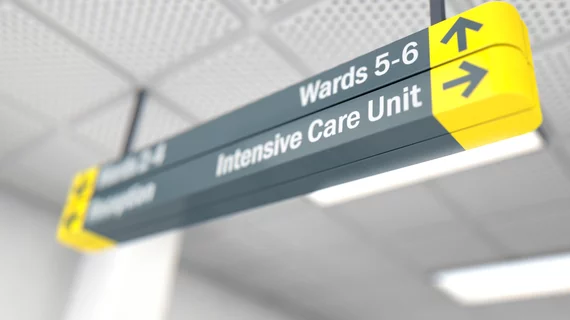Respiratory failure, shock primary reasons for cardiac ICU admissions
A study that aimed to characterize cardiac ICU (CICU) care patterns and outcomes in North America has identified respiratory failure and shock as the predominant reasons for CICU admission—and, despite high resource use, outcomes for many patients were poor.
The study, published July 24 in JAMA Cardiology, established the Critical Care Cardiology Trials Network (CCCTN), a multicenter network of 16 advanced tertiary care CICUs in the U.S. and Canada. Each CICU submitted admissions data for a two-month period between 2017 and 2018 to the TIMI Study Group, the core investigative body for the CCCTN.
First author Erin A. Bohula, MD, DPhil, a cardiovascular medicine and critical care specialist at Brigham and Women’s Hospital and a professor at Harvard Medical School, and her team said in JAMA that while coronary care units were first established in the 60s with the goal of more efficiently resuscitating patients with complex acute MIs, they’ve evolved to become centers that often treat noncardiac complications, as well.
“In light of such changes, expert groups from international professional societies have identified a need for CICUs to adapt to this transformation of cardiac critical care and called for additional research to quantitatively characterize the demographics, diagnoses, therapies, technology and outcomes in contemporary CICUs to aid in directing such redesigns,” Bohula et al. wrote. “Additionally, experts have identified gaps in the evidence guiding the organization of CICUs as well as the management of the highly morbid conditions encountered in these units.”
The authors said they established the CCCTN to characterize contemporary CICUs and develop an infrastructure for clinical trials in critical care cardiology. They considered 3,049 consecutive admissions logged in their database, many of which involved patients with a high burden of noncardiovascular comorbidities.
Bohula and colleagues reported acute coronary syndrome (ACS) and heart failure were the top two CICU admission diagnoses in their cohort (31.8% and 18.6% of admissions, respectively), but the proportion of ACS varied widely from center to center, ranging from 15% to 57%. The primary indications for CICU care were respiratory insufficiency (26.7%), shock (21.1%), unstable arrhythmia (17.1%) and cardiac arrest (8.7%).
Advanced CICU therapies or monitoring were required for 1,776 patients, or 58.2% of the pool. Those included intravenous vasoactive medications (36.2%), invasive hemodynamic monitoring (30.8%) and mechanical ventilation (21.4%). The overall CICU mortality rate hovered around 8.3%.
“While the observation of a very low mortality risk in a significant subcohort of patients suggests that they may be cared for in lower-intensity settings, it is possible that the favorable outcomes were achieved as a result of CICU care, including nursing staffing ratios and expertise, and would not be reproducible if traiged to other environments,” Bohula et al. wrote. “We regard this aspect of our findings as providing a starting point for additional research and that a conclusion of an ‘overuse’ of CICUs is premature.”
They said the CICU indications associated with the highest mortality rates in their study were cardiac arrest (38.1%), cardiogenic shock (30.6%) and the need for renal replacement therapy (34.5%). While the mortality rate in these particular patients exceeded 20%, those admitted to the CICU solely for postprocedural observation or monitoring had a much lower mortality rate of 0.2% to 0.4%.
“These data underscore the merit of proposals for advanced training and skills in those principally responsible for patients admitted to CICUs,” the authors wrote. “While leadership of the CICU was guided historically by research interests and expertise in acute reperfusion therapy, based on observations from the CCCTN registry, the current training of practitioners with a career focus on cardiac critical care should include expertise in acute heart failure management, management of mechanical support, post-cardiac arrest care, electrical storm and the ability to integrate significant noninvasive cardiovascular imaging data into acute clinical decision-making.”

